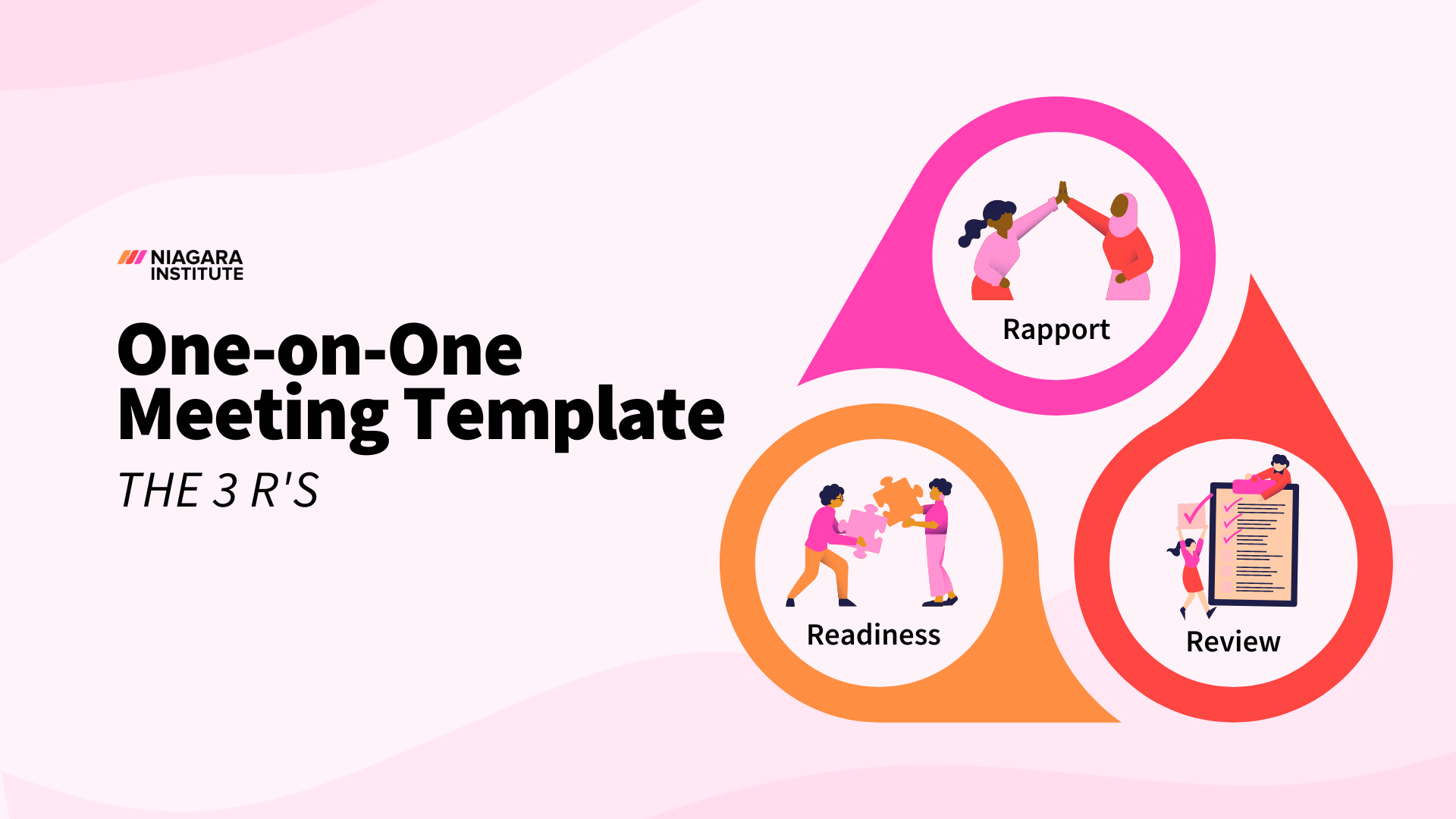5 min read
Skip-Level Meetings 101: A Brief Guide for Middle Managers
It can be tricky for middle managers, who are by nature quite removed from the day-to-day life of those on “the frontline,” to get a feel for what's...

Staying connected with your boss, your direct reports, and your peers has never been more important than over the last 18 months. Whatever you call them, one-on-one meetings, catch up meetings, or weekly touch base meetings, these meetings, whether face-to-face, virtual, or a catch up call, have been vital to keeping team engaged, aligned, and supported.
A catch-up meeting is a conversation between two or more colleagues who engage in dialogue to build relationships, stronger bonds, and connections on a professional and personal level. While catch-up meetings have always been important, over the last 18 months, something has changed. The catch up meeting has gained importance, even in the busiest of schedules.
Purpose: To reconnect, share updates, and discuss recent developments or changes during a weekly or a monthly catch up meeting.
Context: Can be more informal and is often used when team members, colleagues, or collaborators haven't interacted for a while and need to catch up on work and bring each other up to speed on various topics.
Focus: General updates, sharing of news, and discussion on ongoing or upcoming matters, without necessarily being tied to a previous meeting's agenda.
Reclaim.ia, a productivity and time-blocking app for Google Calendar, took a deep dive to understand the pandemics’ impact on quick catch up meetings. The corresponding report aggregated the data comparing workweeks from pre-pandemic, February 2020 and current, October 2021 across 15,000 professionals. Some of the highlights of the report include:
If you think this is too much time to spend one-on-one with employees, think again. Employees crave this individualized time with their boss, especially younger employees. In fact, researchers found that 60% of Gen Z employees want their leader to touch base with them more than once throughout the week, and of those, 40% want to interact with their manager daily or several times throughout the day.
Knowing they have regularly scheduled time with their leader for a catch-up call puts them at ease with an opportunity to connect, ask questions, and feel supported. Following up on any action items discussed in these catch up meetings indicates that you value your team member contributions and are committed to their growth.
Given that our schedules are already busy, it's important to make sure check-in meetings are a valuable use of time. Try these best practices for catch-up meetings to get the most out of your next meeting.
Check-in sessions are the perfect time to develop relationships and build trust, so the time together doesn't need to be solely dedicated to status updates. Rather, use the time to get to know your employees outside of work. Start the meeting with a free-flowing chat, prompted by questions, such as:
As noted earlier, direct reports need to know they have dedicated time with their leader. It benefits them by knowing they will have your full attention. It helps the leader as it diverts constant interruptions as employees will save non-urgent items for your time together.
However, the benefits mentioned above will be eliminated if the leader is unreliable and has a record of canceling check-in meetings. If you’ve ever worked for or with someone who was constantly rescheduling meetings with you, it leaves the impression you’re not very important to them, even if that is not the case. This is particularly true for regular touchpoints like a weekly catch up meeting or a monthly catch up meeting, where consistency is key to maintaining trust and effective communication. Regularly scheduled catch up calls provide a structured opportunity for team members to discuss their progress, address concerns, and receive valuable feedback.
Creating and collaborating on the agenda for each meeting ensures that the time spent together addresses both the leader’s and the individual’s discussion points. It gives the check-in meeting a clear purpose. However, it shouldn’t be so rigid that conversations or critical topics are cut short.
Use a collaboration tool such as Google Docs or a private Slack channel to collaborate on the agenda and talking points between meetings to keep track of items as they arise.
With so much VUCA (volatility, uncertainty, complexity, and ambiguity) experienced by individuals at work and home since the start of 2020, getting a pulse check on how individuals are feeling during your check-in meetings is a good use of time. Find time in the meeting to ask questions like:
Check-in meetings are an ideal opportunity to give and receive feedback. Feedback shouldn’t only be delivered by the leader. Individuals should feel open to providing feedback as well. However, the leader may need to ask a question like “Do you have any feedback for me?” or when discussing a particular scenario, asks the question, “What could I have done differently in this situation?”
Employees crave feedback from their leader, yet 44% of managers find delivering feedback stressful, with 21% outright avoiding it. If you find yourself amongst the 44% of managers, check out this guide designed to elevate the stress and anxiety many leaders experience when delivering feedback.
Professional goals and development plans shouldn’t come up once a year during the annual review. Instead, they should be discussed and have the progress tracked periodically during check-in meetings to ensure they’re on track and no changes need to be made to the plan. These critical conversations demonstrate that a leader is invested in seeing their employees succeed. In fact, Gallup research has found that employees who feel as though their manager is invested in them as people are more likely to be engaged
To ensure that what was discussed in the meeting is actioned, it is essential to take notes after decisions are made and accountabilities are assigned. Then, send a follow-up email post-catch-up meeting with what the leader and the individual agreed to do, along with due dates. Each individual in the follow-up meeting should hold the other accountable.

5 min read
It can be tricky for middle managers, who are by nature quite removed from the day-to-day life of those on “the frontline,” to get a feel for what's...

5 min read
As a leader, the last thing you want an employee to think when you send an invite for a one-on-one meeting is, “What have I done wrong.” This can...
.png)
7 min read
We’ve all been there. Attending meetings where the leader drones on, a few people monopolize the conversation, and nothing is actually accomplished....